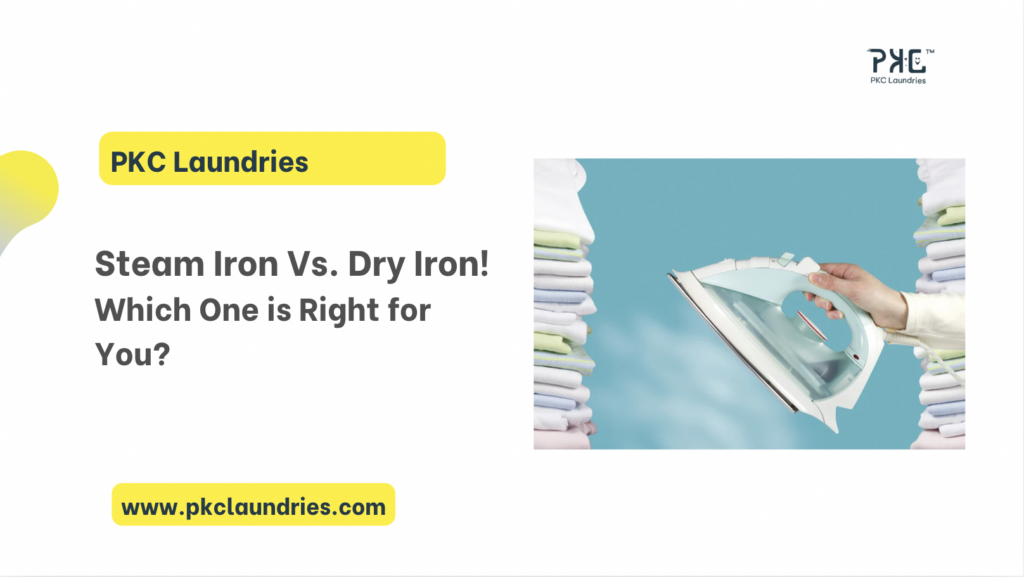When it comes to garment care, irons are indispensable tools for maintaining a polished and professional appearance. However, with various options available, choosing between a steam iron and a dry iron can be challenging. Both are designed to tackle wrinkles, but they differ significantly in functionality, features, and fabric compatibility. Understanding these differences will help you make the best choice for your wardrobe.
What Is a Steam Iron?
A steam iron features a built-in water tank that allows it to generate steam during ironing. The steam softens fabric fibers, making wrinkle removal more efficient. Steam irons are especially effective for heavier fabrics such as denim, linen, and cotton. Their versatility extends to vertical steaming for hanging garments, curtains, and upholstery.
Benefits of Steam Irons
- Efficient Wrinkle Removal: Steam penetrates deep into fabric fibers, relaxing them and eradicating stubborn wrinkles with minimal effort.
- Versatility: Steam irons can be used both horizontally and vertically, making them ideal for a wide range of applications, including delicate or hanging items.
- Time-Saving: The combination of heat and steam reduces ironing time significantly.
- Ideal for Heavier Fabrics: Steam irons perform exceptionally well on thick, heavy materials that dry irons may struggle to smooth.
Considerations
- Water Maintenance: Regular refilling of the water tank is required for continuous steam production.
- Risk of WaterMarks: Improper use can sometimes result in water stains on delicate fabrics.
- Higher Cost: Steam irons are generally more expensive than dry irons due to their advanced features.
What Is a Dry Iron?
A dry iron relies solely on heat to smooth wrinkles, without the addition of steam. It is a straightforward tool, often preferred for its simplicity and reliability. Dry irons are best suited for fabrics that don’t require moisture to relax wrinkles, such as silk, polyester, and other synthetics.
Benefits of Dry Irons
- Simplicity: With no water tank or steam settings, dry irons are easy to operate and maintain.
- Precision: Perfect for pressing sharp creases and handling delicate fabrics that may be damaged by steam.
- Lightweight Design: Dry irons are typically lighter and more compact, making them convenient for travel.
- Cost-Effective: They are more affordable and have lower maintenance requirements compared to steam irons.
Considerations
- Limited Effectiveness on Heavy Fabrics: Dry irons may struggle to remove wrinkles from dense materials like linen or denim without considerable effort.
- Manual Effort: Achieving a smooth finish with a dry iron can require more time and physical exertion.
How to Choose Between a Steam Iron and a Dry Iron
Your choice when choosing between steam iron and dry iron for fabrics should depend on your specific needs, the types of fabrics in your wardrobe, and how often you iron. Below are key factors to consider:
1. Fabric Types
- A steam iron is ideal for natural fibers like cotton, wool, and linen, which benefit from the softening effects of steam.
- A dry iron is better suited for delicate and synthetic fabrics like silk and polyester, which require precise and gentle handling.
2. Usage Frequency
- If you frequently iron large laundry loads, a steam iron’s efficiency and versatility are invaluable.
- For occasional use or travel, a dry iron’s simplicity and lightweight design may be more practical.
3. Budget
- Steam irons, with their advanced features, tend to cost more. If you’re budget-conscious, a dry iron offers a cost-effective solution without compromising basic functionality.
4. Additional Features
- Steam irons often include features like adjustable steam settings, self-cleaning mechanisms, and anti-drip technology.
- Dry irons, while simpler, are less prone to mechanical issues and require minimal maintenance.
Conclusion
Both steam irons and dry irons have their distinct advantages, and the best choice depends on your unique requirements. Steam irons are versatile and highly effective for tackling heavy-duty ironing tasks and various fabric types. Dry irons, on the other hand, are simple, precise, and economical, making them ideal for delicate fabrics and travel needs.
Whether you prefer the power of steam or the simplicity of dry heat, selecting the right iron can enhance your garment care routine and keep your clothes looking impeccable. Evaluate your wardrobe, ironing habits, and budget to determine which tool aligns with your lifestyle and ensures your garments always look their best.
Need professional ironing? Book our laundry services today for perfectly pressed clothes.
Have questions? Contact us now!



